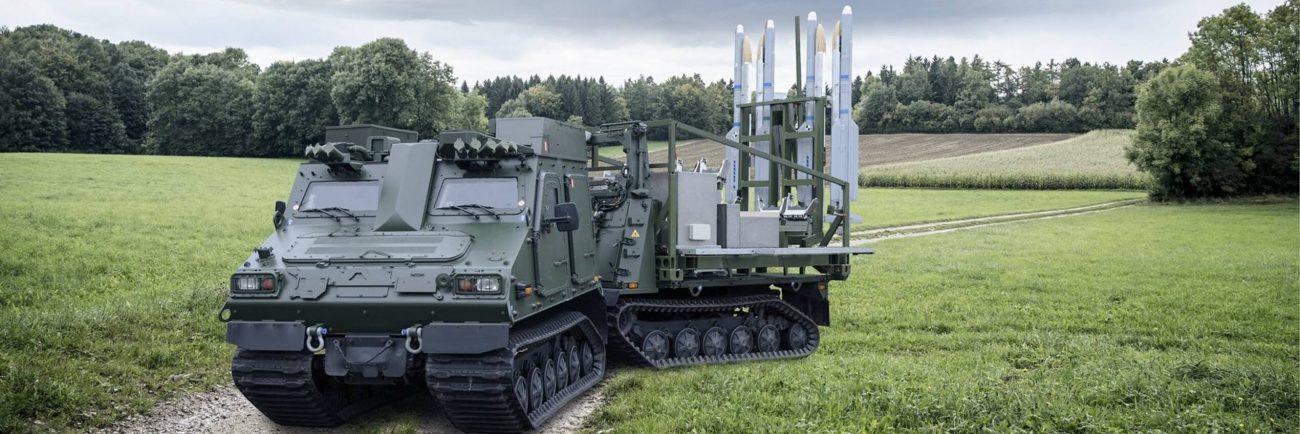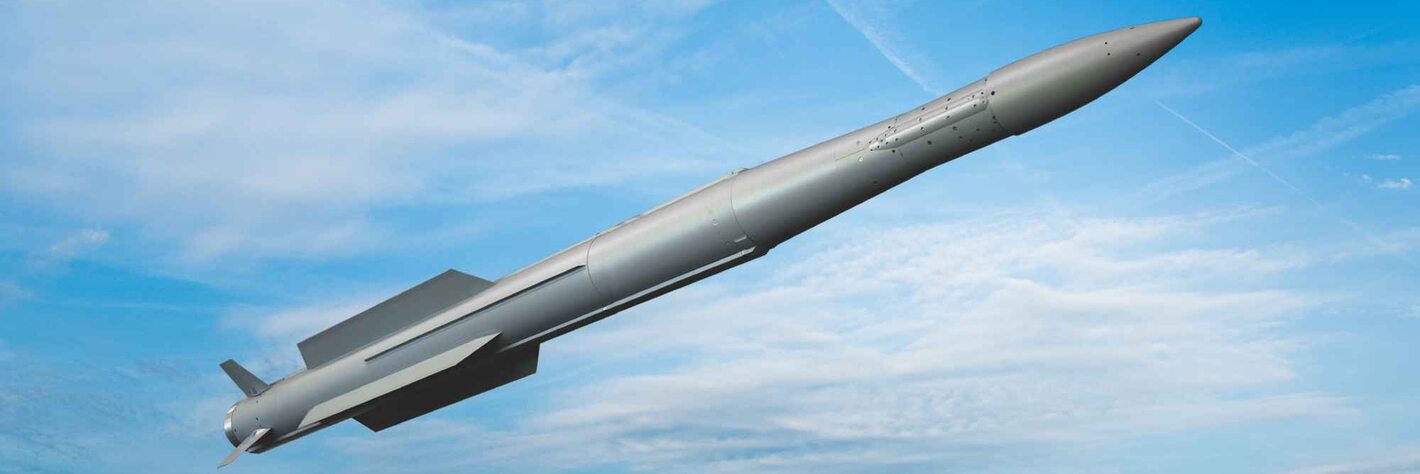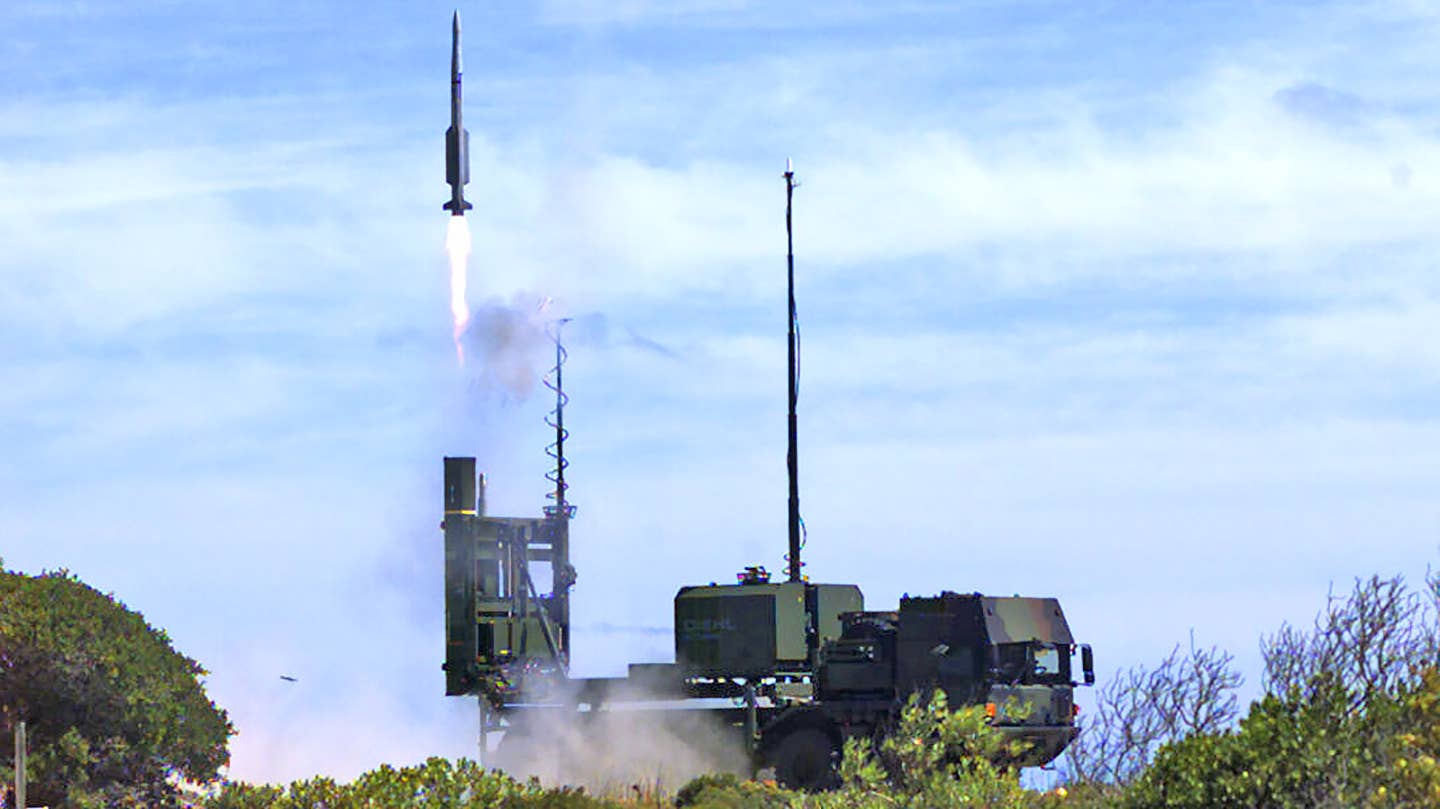Chancellor Olaf Scholz may be engineering one of the biggest shifts in German foreign policy after Angela Merkel stepped down after 16 years in office. According to a German daily newspaper report, Berlin may supply the advanced IRIS-T SLM surface-to-air missile system to Ukraine.
Chinese Diplomat ‘Shell Shocks’ Beijing; Says Matter Of Time Before Russia Loses The Ukraine War
“The Federal Security Council is currently deliberating on whether Ukraine will get a German air defense system! Specifically, it is about the IRIS-T SLM system with a range of 40 kilometers (height: 20 kilometers),” the Bild newspaper claimed.
The new missile system will bolster Ukraine’s air defense which has thus far relied upon aging Soviet-era systems which the Ukrainian military has effectively deployed to prevent Moscow from dominating the country’s air space.
“We would not assess that the Russians have air superiority over Ukraine and we would still assess that the aerospace is contested,” John Kirby, the Press Secretary of the US Department Of Defense, told reporters on May 10.
“One of the reasons it’s contested is because Ukrainians still have a viable air force of their own and they also have a very effective air defense capability – both short and long-range,” Kirby added.

Ukraine’s Air Defense Needs To Be Replenished
While a senior US defense official told reporters that they know Ukraine’s air defense systems have been effective because they are seeing Russian pilots being wary of entering Ukrainian air space.
“One of the reasons we know it’s working is because we continue to see the Russians wary of venturing into Ukrainian air space at all, and if they do, they don’t stay very long,” the official said, speaking on condition of anonymity to discuss intelligence matters. “Almost all of them are launched and recovered inside Russia and they try to do these standoff strikes so that they don’t have to enter Ukrainian air space.”
However, as the war goes on, so too does the attrition of Ukrainian air defense systems. This is why the US has been working with its allies and partner countries to provide Ukraine with additional systems.
#Ukraine: The Russian forces claimed to hit a Ukrainian S-300 battery, consisting of what appears to be a 5P85S launcher and 5N63S engagement radar, with a cluster munitions fired from a Smerch MRL- causing a massive explosion. It is unknown when or where precisely this occurred. pic.twitter.com/Vp62VR9OAM
— ?? Ukraine Weapons Tracker (@UAWeapons) May 6, 2022
So far, the focus of this effort has been to supply Ukraine with those systems which its armed forces are already familiar with so that they can be fielded immediately without much training and this also prevents any technological risks from arising.
‘Made In Russia, Recycled In Ukraine’ — Putin’s Best Fighter Bombers Are Being Sold As Souvenirs In Ukraine
Last month, the Prime Minister of Slovakia, Eduard Heger, confirmed that his country had transferred its only Soviet-era S-300PMU long-range surface-to-air missile system to the Ukrainian military.

IRIS-T SLM Surface To Air Missile System
If Ukraine receives the IRIS-T SLM, it would be its first advanced western air defense system and one of the most capable in terms of range and altitudes.
The truck-mounted missile system has a multi-purpose radar capable of tracking multiple targets simultaneously and is designed to hit combat aircraft, attack helicopters, cruise missiles, rocket artillery, drones, anti-radar missiles, and bombs.
‘Double Trouble’ For World’s Biggest Defense Firm As Japan Mulls Removing It From Its Fighter Jet Program
Its manufacturer, Diehl Defence, says the IRIS-T SL guided missile, which is at the heart of the system, is based on the previously developed and widely deployed IRIS-T air-to-air guided missile.
The company claims that “selective adaptations,” such as a streamlined nose section, have brought enhancements to the range and altitude of the missile. Its thrust-vectoring control “enables maximum lateral acceleration directly after launch, thus allowing engagements of targets at very short range” as well.

The missile has an imaging infrared (IIR) seeker that enables a “high-precision terminal approach with extraordinary direct hit probability.”
The interceptor missile is guided toward its target via a datalink and after it is in close vicinity, its imaging infrared seeker then acquires the target for the final stage of the engagement.
As the missile itself does not have an active radar seeker, it cannot be jammed or confused by chaff and will not give a direct warning of its approach via radar emissions.
However, the fire control radar could potentially be detected, or the missile could be guided to the general area of its target via a third-party sensor.
Straight From The Boneyard – A Very Rare Soviet-Era Tank Spotted In Donbas As Ukraine Battles Russia
Diehl Defence says the IRIS-T SLM air defense system has 360-degree protection and requires a small crew because of a high degree of automation, flexible system architecture, network capability, and high tactical and strategic mobility.
While a simpler SAM system uses the standard IRIS-T missile called the IRIS-T SLS, which offers limited capabilities, presently, the more advanced IRIS-T SLM is the system reportedly being looked upon to equip Ukraine’s air defenders.

Bild reported that the Ukrainian troops could start training on the system in Germany once the security cabinet approves the delivery and that the system could be deployed in Ukraine by November.
The Ukrainian government has also expressed interest in acquiring more of these SAM systems over the coming years. According to Bild, Ukraine is interested in receiving 10 IRIS-T SLM systems, which could be manufactured over the next three to four years.
However, the deal for sending the IRIS-T SLM system to Ukraine is at least several weeks from being approved by Germany, Bild reported, adding that Scholz has announced in the FDP parliamentary group on May 10 that modern air defense systems would also be supplied to Ukraine.
Earlier this month, Germany had announced that it would deliver seven self-propelled howitzers to Ukraine in a further reversal of its policy of not sending heavy weapons to the war-ravaged country.
- Written by Tanmay Kadam/EurAsian Times Desk
- Contact the author at etdesk@eurasiantimes.com
- Follow EurAsian Times on Google News




